Results
-
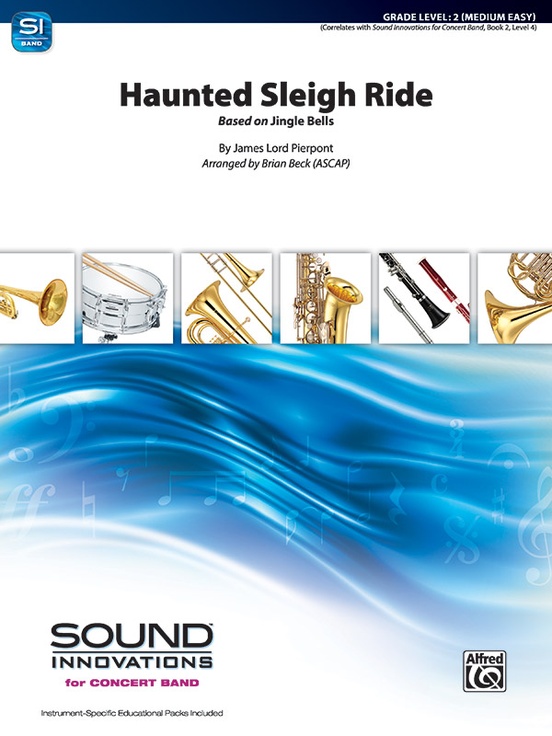 £53.95
£53.95Haunted Sleigh Ride (Concert Band - Score and Parts) - Pierpont, James Lord - Beck, Brian
Haunted Sleigh Ride is based on "Jingle Bells" but shifted to a minor key, transforming a winter favourite into an eerie adventure into the snowy unknown. We may not be "laughing all the way." Brian Beck's setting is jam-packed with various style and dynamic markings as well as accidentals in every part, challenging musicians, and engaging audiences. Shifting a piece from major to minor (or vice versa) will instantly illuminate a melody and breathe new life into a piece. What was happy is now sad, what was dark is now vibrant, and, in this case, what was cheerful is now spooky. Duration: 2.15
Estimated dispatch 7-14 working days
-
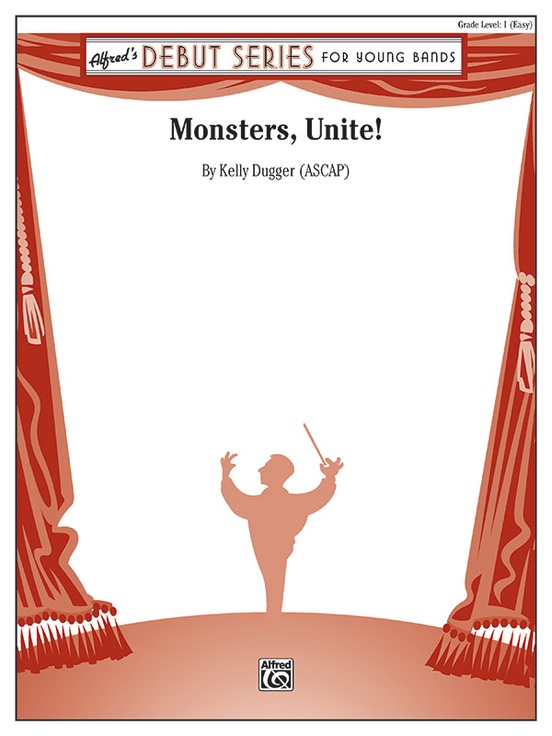 £53.95
£53.95Monsters, Unite! (Concert Band - Score and Parts) - Dugger, Kelly
Monsters, Unite! by Kelly Dugger is a fun beginning band piece that is sure to be a hit, not only at Halloween time but all year round. Monsters all around the world are waking up to a calling to unite. Some are big, hairy creatures, and others are delicate and fairy-like. They walk and fly long distances to find each other. In the end, they all come together, marching as one. Just when you think they've marched off into the distance, they come together to surprise the audience. Unique percussion effects, timpani glissando and theremin (or flexatone) add to the spooky sound. A tuba solo at the end is followed by a surprising scream that will leave the performers and the audience giggling! Duration: 1.30
Estimated dispatch 7-14 working days
-
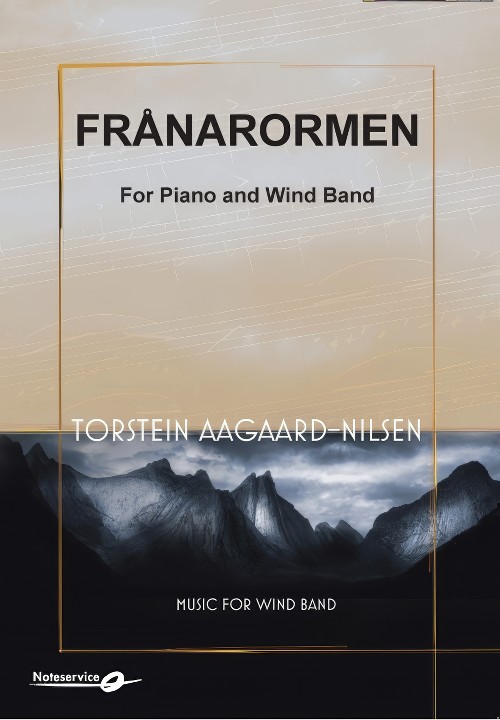 £160.00
£160.00Franarormen (Optional Piano Solo with Concert Band - Score and Parts) - Aagaard-Nilsen, Torstein
In 1911, the Australian pianist and composer (and friend of Edvard Grieg), Percy Grainger (1882-1961) went on a tour in Norway. He performed more than forty concerts over a few months. Fifty years later, in 2011, The Royal Norwegian Marine Band made a concert project called "Percy Grainger Revisited Tour". "Franarormen" is a worm or a dragon as described in norse medieval ballads. I have used four different tunes from the region Telemark were Fr?narormen is mentioned in the text. The piece is a musical reflection - not at all as drammatic as the text. It is like a picture of an old fairytale and a dwell on the sound of ancient songs. The piece can be performed without the piano part. Instructions to be found in the percussion parts. - Torstein Aagaard-Nilsen
Estimated dispatch 7-14 working days
-
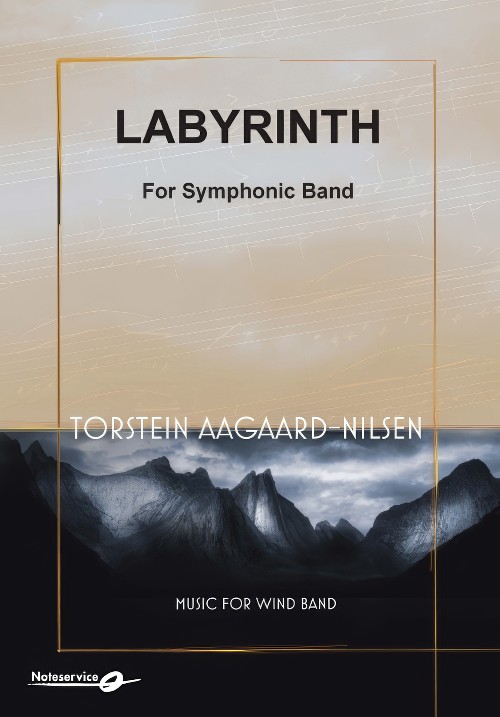 £242.50
£242.50Labyrinth for Symphonic Band (Concert Band - Score and Parts) - Aagaard-Nilsen, Torstein
I wrote Labyrinth to celebrate the 450th anniversary for the city of Fredrikstad. The Danish king Fredrik II agreed to establish a new town further down the river Glomma, to make it easier to defend from the Swedes. The piece is a network of quotations mixed with my own pitch material. My versions of the quoted melodies are not authentic, and sometimes hard to recognize. However, the different quotations give the music an aura of tonality. For example, a dance tune composed by the Flemish composer Mattheus Le Maistre (1505-1577). The melody also occurs in the first danish book of hymns written after the reformation. Since Norway for 400 years was a part of Denmark and everybody had to write and read Danish, they used much of the same music, too. I also use regular Danish hymn tunes and quote from a religious folk song from the area around Fredrikstad. The military signals I use are authentic (for example, The Old Danish March), and I am very sure they were used in the Old Town (the fortress) of Fredrikstad. The drums quote from The Downfall of Paris. This could have been heard played by professional soldiers hired by the Swedes from Scotland. This edition is a revised version made in 2020. - Torstein Aagaard-Nilsen. Duration: 23.00
Estimated dispatch 7-14 working days
-
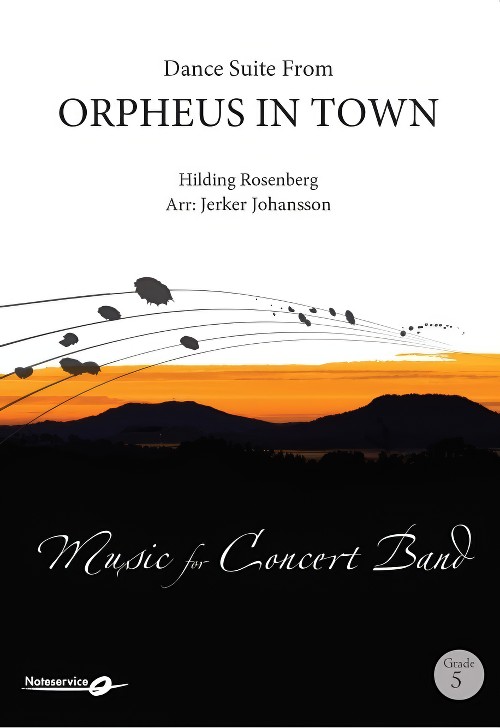 £242.50
£242.50Orpheus in Town, Dance Suite from (Concert Band - Score and Parts) - Rosenberg, Hilding - Johansson, Jerker
Dance Suite in Seven Movements. Op.75. Orpheus In Town. In 1936 the Stockholm Concert Hall was given its most distinguished artistic adornment, Carl Milles' Orpheus fountain. A Greek god lets his voice and the sounds of his lyre float over the rush and bustle of the big city far up in Ultima Thule. Two choreographers at the Stockholm Opera, Julian Algo and Vera Sager, had a brainwave. Why should Orpheus merely be a statue, a symbol of the beauty and inspiring power of music, why not give the myth about him its special Stockholm chapter as well? This is what happened: On the stage we see the columned facade of the Concert Hall and in front of it the statue group with Orpheus and the eight enraptured listeners. Suddenly the figures come to life, jump down from their pedestal and dance into the crowd at the marketplace. Orpheus, who is consumed by longing for Eurydice, begins looking for his beloved, first among other well-known sculptures in town, then in restaurants and nightclubs. At last he thinks he recognises her in a fashionable society woman and brings her to the Concert Hall. However, faced with the threat of having to spend her life in bronze at Orpheus' side, she runs away. She wasn't Eurydice after all. Or was she? For this ballet, which had its first performance at the Stockholm Opera in 1938, Hilding Rosenberg wrote vital and entertaining music in a style which is unusually to the point, and with a bright and strong orchestration. The music in the Dance Suite from Orpheus in Town is taken from the dance scenes at the nightclub: guests and a bartender perform, finally also Orpheus and his entourage. The suite consists of: 1. Rhythm of the Times (2.00); 2. Bartender's Dance (1.30); 3. Girl's Dance (1.00); 4. Dance of the Negress (2.30); 5. Trio Dance (1.30); 6. Tango (2.00); 7. Finale (1.30). Total duration: 14.00.
Estimated dispatch 7-14 working days
-
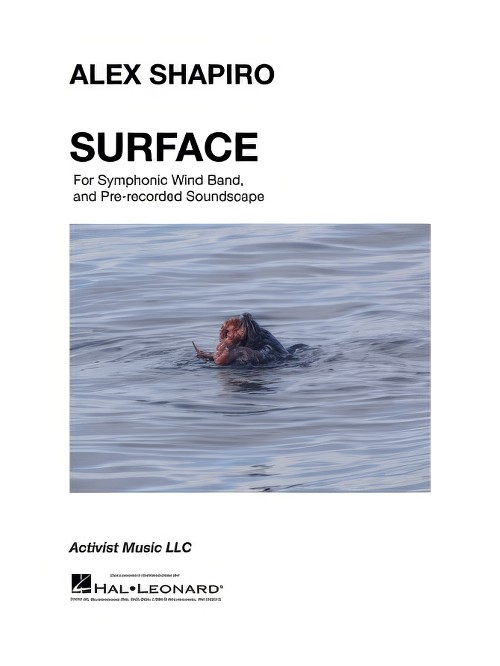 £150.00
£150.00Surface (Prerecorded Soundscape with Concert Band - Score and Parts) - Shapiro, Alex
Surface, which is also the second movement of Shapiro's electroacoustic wind symphony suite Immersion, is a mini percussion concerto that reflects a Harbour seal's dramatic lunchtime assault on a Giant Pacific octopus, witnessed by the composer from her studio as she began writing this movement. A sudden explosion through the calm water revealed two animals flailing in battle one moment, then diving below to deceptive stillness... until the next violent eruption. The seal eventually won its meal, but not without the chaos of significant effort. In this habitat of life and struggle, every day brings a challenge.Duration: 10.15
Estimated dispatch 7-14 working days
-
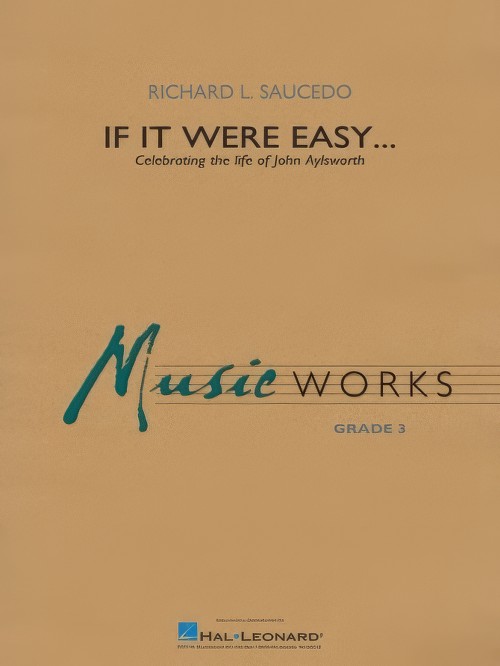 £64.99
£64.99If It Were Easy... (Concert Band - Score and Parts) - Saucedo, Richard L.
Composed as a tribute and memorial to a revered educator, If It Were Easy... brings to mind a range of emotions and moods, including the idea that goals worth achieving are not always easy, but require dedication and perseverance. The piece begins quietly then builds gradually to a glorious full band chorale before tapering to a quiet and delicate finish.
Estimated dispatch 7-14 working days
-
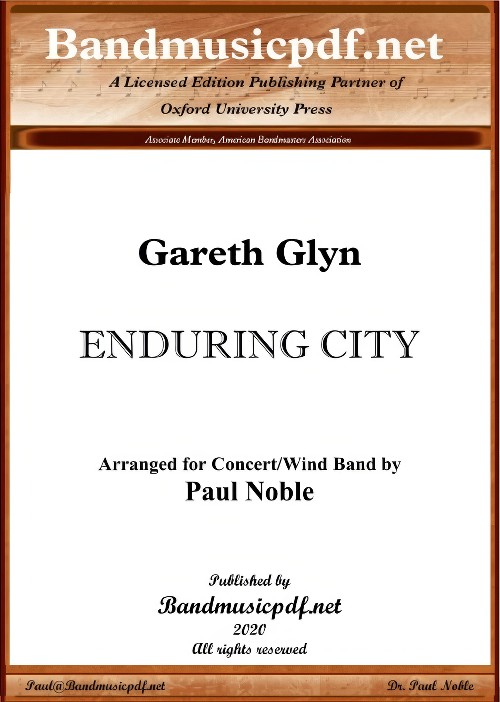 £295.00
£295.00Enduring City (Concert Band - Score and Parts) - Glyn, Gareth - Noble, Paul
Enduring City was composed to celebrate the 300th anniversary of the founding of New Bern, the first permanent seat of the colonial government of the state of North Carolina. It was first settled in 1710 by Swiss and German immigrants under the leadership of Christoph von Graffenried and and John Lawson. The 2010 composition was commissioned by the New Bern 300th Anniversary Committee and the City of New Bern, to portray the city in terms of its history, its present and its optimism for the future; the North Carolina Symphony gave its first performances, in venues throughout the state. Its one continuous movement is in well-defined sections. Most of the musical themes derive from names of people and places connected with New Bern, using letters that are also note-names, omitting those which are not. For example, the opening trumpets spell out E-B-E-D for New Bern ('R' standing for Re, which is D in fixed-doh sol-fa notation) and B-C-G for Baron Christoph von Graffenried. They are answered by the orchestra's "John Lawson, Gent.", the name on the cover of the co-founder's A New Voyage to Carolina. Lawson's questing and adventurous character is then suggested, accompanied by a "Carolina" note-name theme; and, after the Graffenried theme on solo horn, the music of both men combines for their voyage, culminating (on trumpets and trombones) in the founding of New Bern. The story of Tryon Palace, central to the city's history, is represented by echoes of the various kinds of music heard at the Governor's residence - fife and drum bands, minuets and the slaves' "Jonkonnu" festivals from Africa, celebratory fanfares and fireworks; the section reaches a climactic ending when all are combined. After a peremptory interruption by the snare drum, the perky fife theme is transformed to portray the conflicts that visited New Bern over the centuries, alternating with a new "grief" theme, which - when sounded by strings alone - leads to music of reconciliation and then of the natural beauty of the city's surroundings. A steady, lively rhythm underpins the final section, confidence - in the present and for the future. Echoes of previous themes are heard, but the closing peroration is reserved for a majestic and joyous statement of the name of New Bern itself.
Estimated dispatch 7-14 working days
-
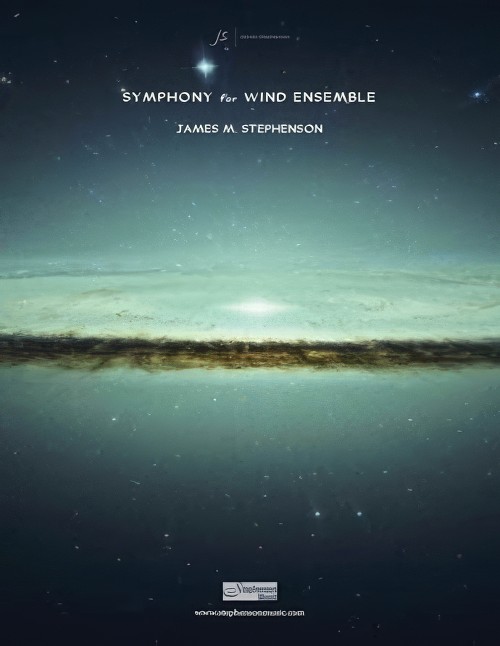 £284.99
£284.99Symphony for Wind Ensemble (Concert Band - Score and Parts) - Stephenson, James M.
The symphony is in four movements. The first movement starts a single triangle note, followed by a guitar strum. The movement anxiously attempts to churn into action, only to be stifled repeatedly by the single triangle note. Finally, with the guitar as inspiration, the main theme gets under way, revealing an almost Spanish, or even Eastern European flavor. Ideas and themes get reworked, developed, repeated and augmented throughout the movement, before finally closing out just as it began, but in reverse: this time guitar followed by triangle. The second movement steals from an angular and shrieking motif of the first, but is presented in opposite fashion: with the warm blend of the low brass. Hints of iconic military symbolism are interspersed throughout this movement, as homage to the commissioning ensemble. The main theme is inverted and awarded to a solo trumpet midway before giving way to a brass fanfare, though not done loudly, but here muted, from afar. The low brass return at the end, fading away to nothing as the bell tolls. The third movement is merely a short interlude - a break, in almost Gershwin-like fashion - from the seriousness of the movements that precede and follow. Lastly, the fourth movement is a wild one: with mixed meters and plentiful percussion penned to propel the movement throughout. The movements' themes are all reworkings of material presented earlier. Duration: 25.00
Estimated dispatch 7-14 working days
-
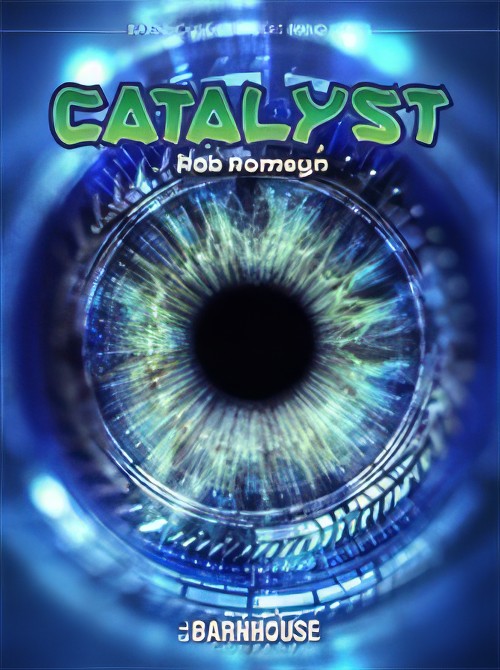 £84.00
£84.00Catalyst (Concert Band - Score and Parts) - Romeyn, Rob
Driving rhythms, contemporary harmonies, stark contrasts, and multi-meter are the "Catalyst" for excitement and intrigue in this epic programmatic work by Rob Romeyn. We begin with an explosion of rhythmic energy and motion. From here, an intriguing melodic theme is introduced amid a lighter texture. As the music develops, this melodic theme is expanded upon rhythmically and through a variety of harmonic variations. A secondary theme enters with a light and almost transparent quality, offering an opportunity to showcase expressive musicality in a mature setting. Further development then ensues, with the music growing ever stronger and stronger, with the emotion practically leaping off of the page. We end with a hair-raising contemporary sounding ending that is sure to have your audience on their feet. Do not miss this outstanding addition to the repertoire for concert or festival use! Duration: 5.30
Estimated dispatch 7-14 working days
